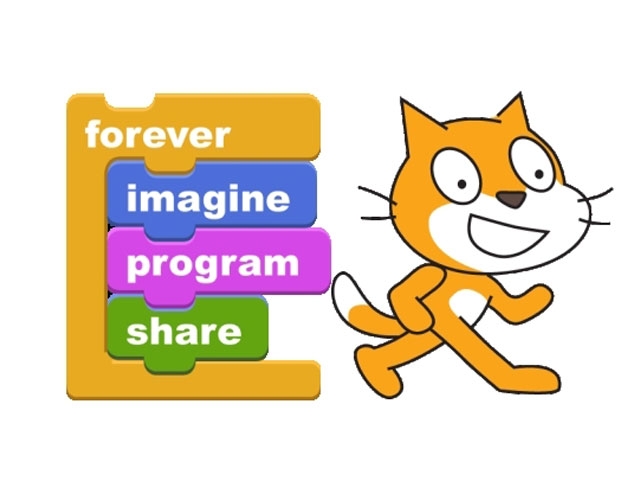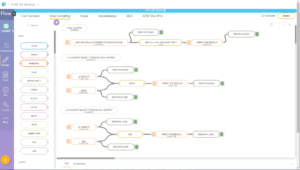
Internet of Things (IoT): Visual Application Development for Education
Introduction
According to the National Center for Education Statistics (NCES, 2016), there are approximately 50.4 million students will attend public elementary and secondary schools as of Fall 2016, according to the National Center for Education Statistics. That’s a slight increase from the 50.3 million who attended in Fall 2015. As of 2015, 73% of all U.S. teenagers had access to a smartphone. Nearly 100% of all U.S. public schools have Internet access. And 70% of middle school students and 75% of high school students use laptops for educational purposes. (Business Insider, 2016)
E-learning has become common practice in the U.S. school systems, however, the use of development tools and applications to control IoT devices are numerous. Today, there are several visual open source tools. For instance, Scratch, S4a, and other tools are loosely based on the Scratch programming language. Scratch is a free visual programming language developed by the MIT (Massachusetts Institute of Technology) Media Lab. Scratch is used by students, scholars, teachers, and parents to create animations, games, and other programs. Scratch can also be used to teach Robotics and Drones how to behave that utilize a myriad of sensors, actuators, LED’s lights, motors, resistors and other electronics. Many educators believe that children respond better to visual stimulation and absorb physical principles better. i.e. the idea of programming “thing” that have practical uses.
Scratch ultimately provides a stepping stone to the more advanced world of computer programming and can be ported into languages such as Python and Java. (Marji, 2014)
Figure 1 – Scratch Tutorial
Figure 2 – Write your First Robot Program in Scratch
Information and Computing in Education
Based on IoT and Educational statistics, there is a significant amount of information (Big Data) that is being generated in education, exchanged by students in classrooms, and stored in Cloud-Based repositories that has become available to companies like Amazon, Microsoft, and Google. Stored data can then be analyzed computationally to reveal patterns, trends, and associations, especially those relating to human behavior and interactions. As IoT grows within education, our children will become more intelligent (hypothesis) before having even entered into High School and College.
According to Marziah Karch at Lifewire, Computer programming is an in-demand and potentially lucrative career path for young people having just graduated from College. Today, there are several Programming Languages used to Teach children how to write code.
For Example:
(LifeWire, 2017)
There are also several Visual Application Development Tools used in some Middle and High Schools that are utilized to create Enterprise and Commercial grade applications. In particular, I have used Reactive Blocks and AT&T Flow Designed before. AT&T Flow designer can be utilized with the AT&T IoT Starter Kit available here:
Messaging Application using MQTT
Above is a messaging project that I worked on using my ATT Starter Kit and AWS IoT to send messages. I acquired the code sample from ATT using their IoT tutorials. You need to create an account at https://marketplace.att.com/.
Here is a tutorial that will help you get started:
https://att.app.box.com/s/15umqzirkrmgru2yl7utbp8x4jv0bgmg
Once logged into the AT&T site, you can utilize other tutorials to help you get started.
https://marketplace.att.com/tutorials
(Postscapes)
The AT&T Starter kit is an excellent kit available for educators and students interested in taking MIT’s Scratch platform to the next level and interacting with 4G/LTE capable devices. The AT&T AWS Starter Kit is also excellent for students interested in developing IoT applications that interact with Amazon’s AWS platform. (AT&T, Amazon, 2017)
Conclusion
It’s fairly straightforward to understand why corporations are creating strategies to align themselves with the IoT market and promote and encourage technology within State and Local Government and Education Systems. As students learn more about micro-electronics, Robotics, and IoT in the classroom, more inventions will inevitably (eventually) lead to innovation or as Bill Walker put it, “Invention Is Easy — Innovation Is Genius (or Accidental)” (Walker, 2015) Either way, IoT is going to radically transform education as we know it.
References
(Wired), B. W. (2015). Retrieved from https://www.wired.com/insights/2015/01/innovation-vs-invention/
AT&T, Amazon. (2017). Retrieved from https://starterkit.att.com/kits/att-iot-starter-kit-aws
Business Insider. (2016). Retrieved from http://www.businessinsider.com/internet-of-things-education-2016-9
LifeWire. (2017). Retrieved from https://www.lifewire.com/kids-programming-languages-4125938
Marji, M. (2014). Learn to Program with Scratch. No Starch Press.
NCES. (2016). Retrieved from https://nces.ed.gov/whatsnew/conferences/statsdc/2016/session_XII.asp
Postscapes. (n.d.). Retrieved from https://www.postscapes.com/iot-visual-programming-tools/#free
Users who have LIKED this post:
One comment on “Internet of Things (IoT): Visual Application Development for Education”
Comments are closed.






I think you brought up many interesting points about IoT in education. For example, I agree with you that exposing kids to new technologies in an early stage help them develop understandings of these fields. Programming skills are more and more crucial in today’s world and developing advanced programming educational tools is essential for the education system to cope with such trends. Early exposure to programming helps young kids to develop a good intuition of these technologies.
I also find the demonstrations of the Scratch you posted very interesting. Developing graphical, colorful and interactive interfaces for the kids is very helpful to spark learning than traditional coding interfaces. Looking forward, I believe there will be more revolutions in education brought by these new technologies and IoT. I linked several articles below about moves made by the leading tech firms such as Facebook and Microsoft in education.
Facebook Helps Develop Software That Puts Students in Charge of Their Lesson Plans-
https://www.nytimes.com/2016/08/10/technology/facebook-helps-develop-software-that-puts-students-in-charge-of-their-lesson-plans.html
Microsoft Acquires Minecraft App for Schools-
https://www.nytimes.com/2016/01/20/technology/microsoft-acquires-minecraftedu-tailored-for-schools.html
How Google Took Over the Classroom-
https://www.nytimes.com/2017/05/13/technology/google-education-chromebooks-schools.html
Users who have LIKED this comment: